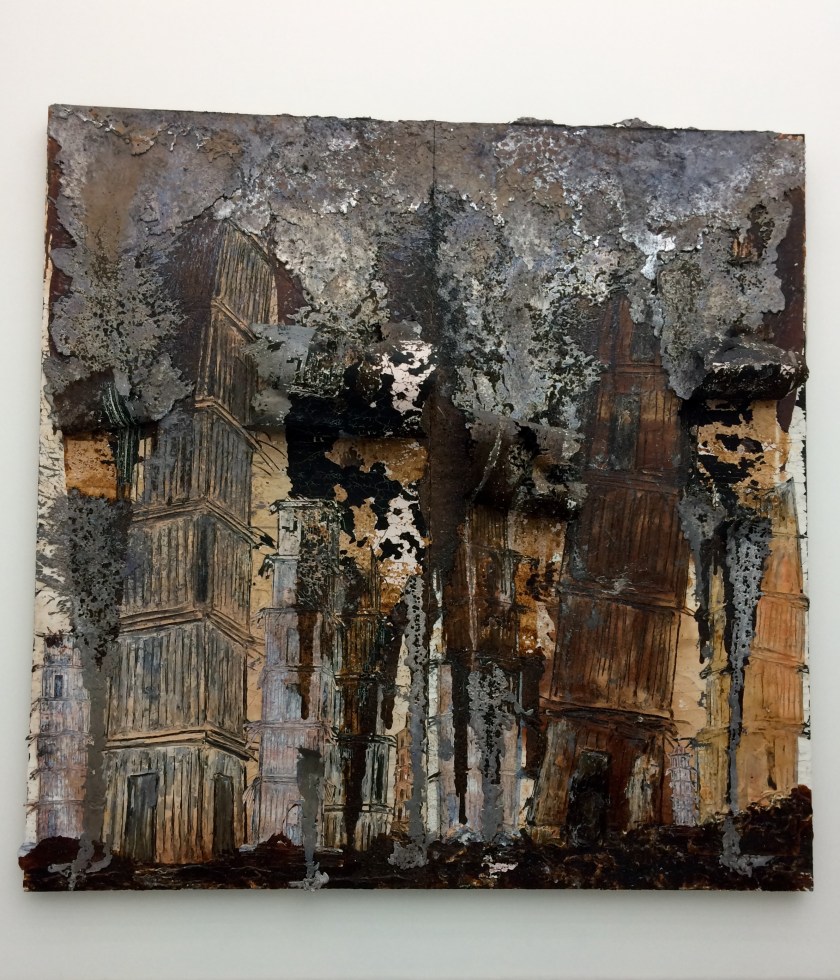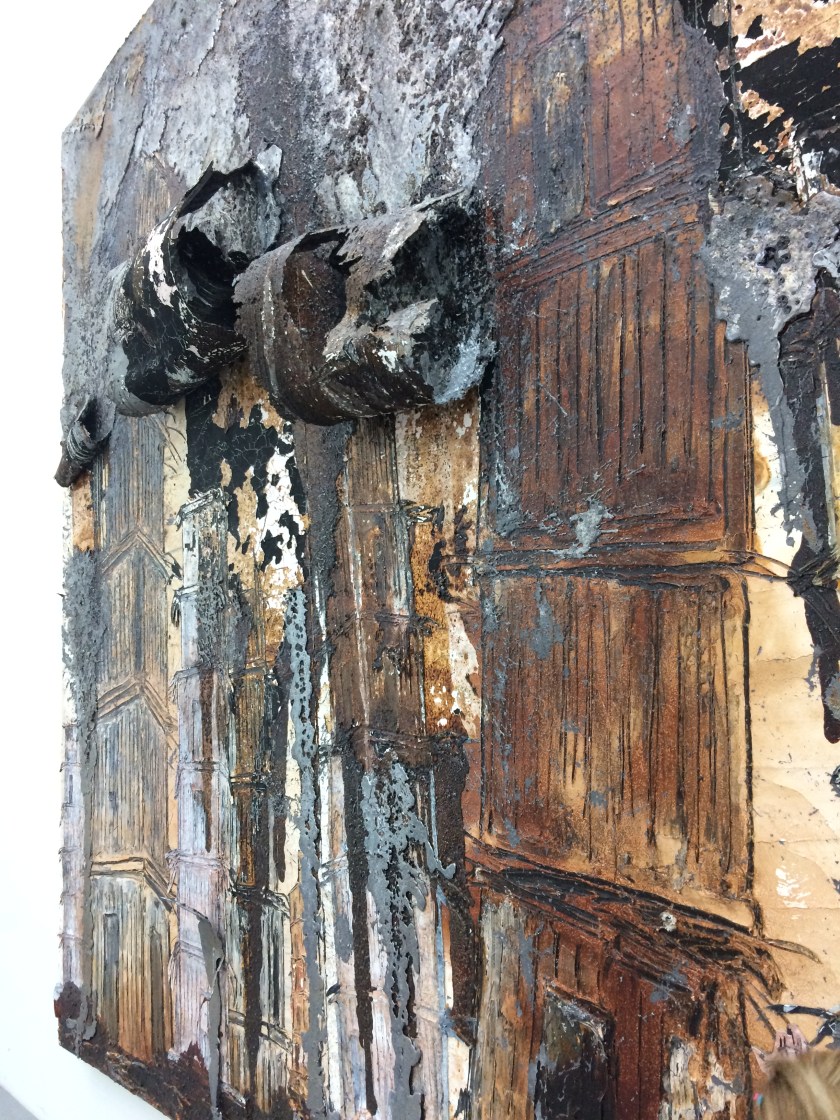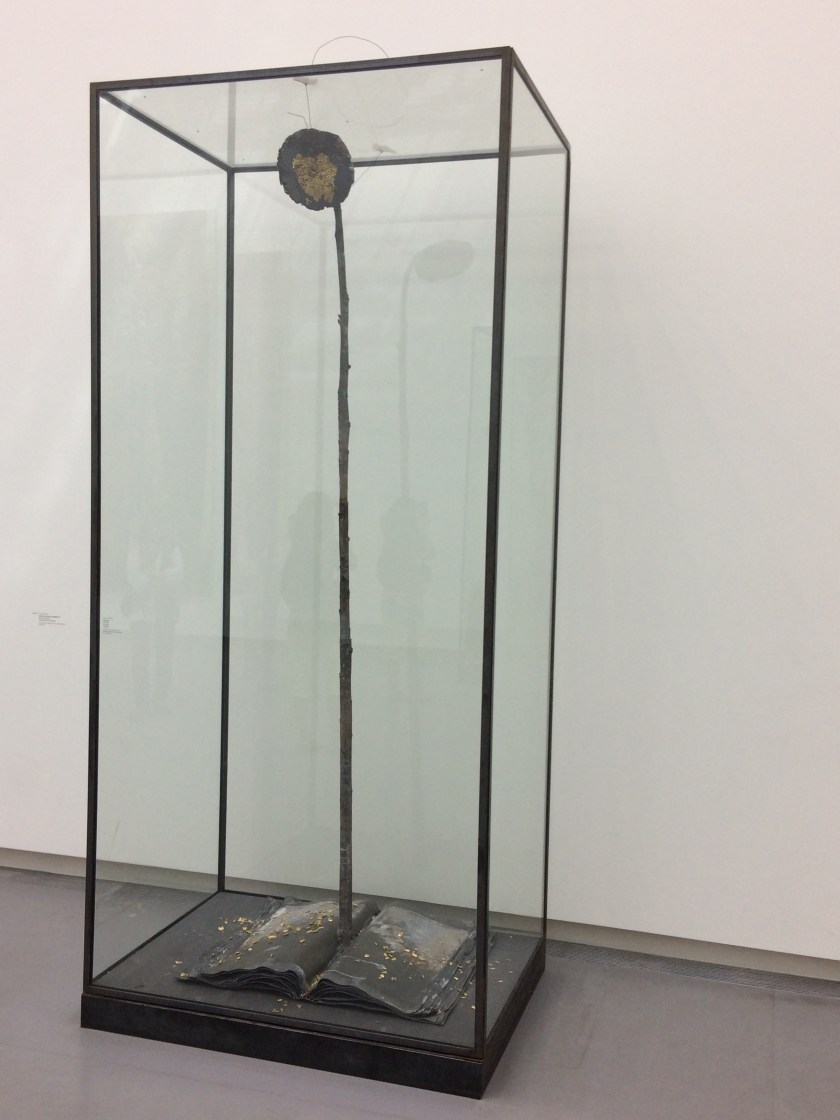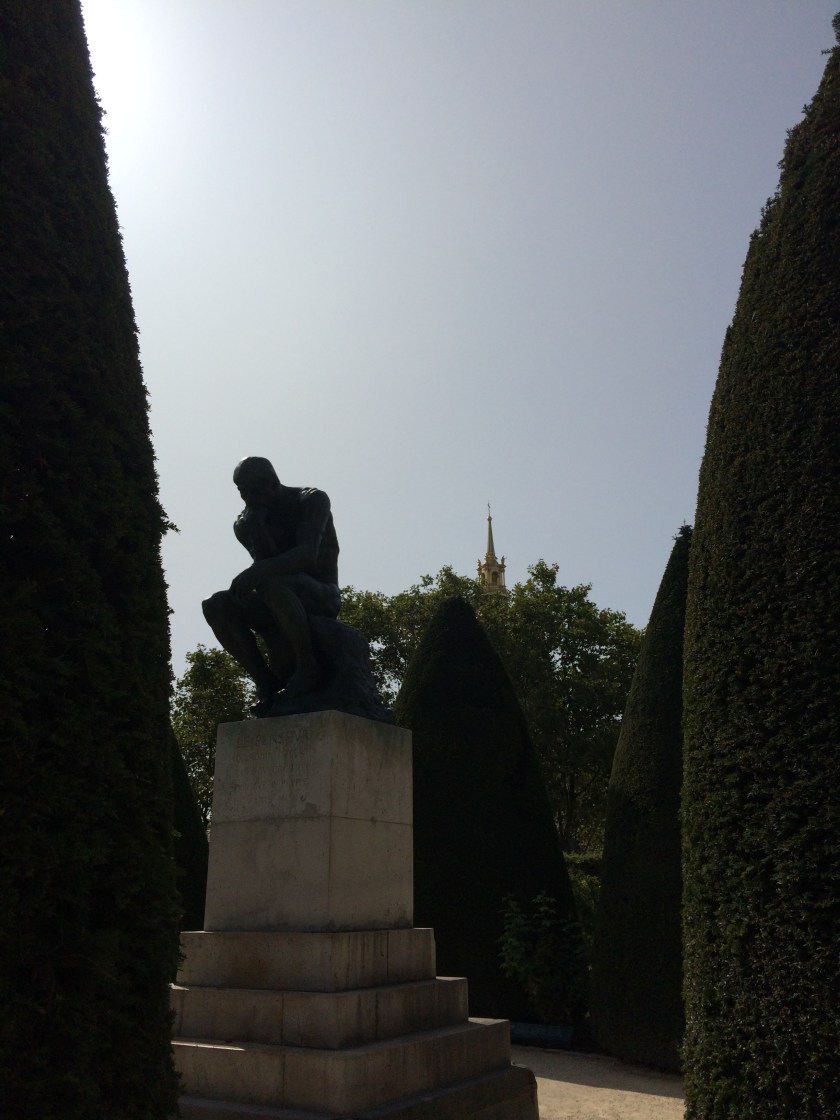On a brief trip to Paris, I managed to squeeze in two art exhibitions, and it was really worth it.

The first was at the Musée Rodin, where the German artist Anselm Kiefer was asked to produce art to mark the centenary of the death of Auguste Rodin. The idea was to invite the viewer to consider the aesthetic concerns shared by the two artists.
Anselm Kiefer was given the freedom to create a series of works incorporating debris that Rodin produced while making his sculptures, such as offcuts and discarded molds.To echo this, elsewhere in the museum displays were altered to present previously unseen plaster works by Rodin.

The Musée Rodin is housed in a 1730 building, the Hôtel Biron, which was initially a private residence, before being rented by the Society of the Sacred Hearts of Jesus. It was then taken over by the state and left vacant for years. In the early 20th century rooms were rented out for studios to artists such as Jean Cocteau, Isadora Duncan and Rainer Maria Rilke, amongst others. Henri Matisse rented space for his school of art, and then Rodin – after Rilke, who later became his secretary, let him know about the building – joined the group, and gradually took over the whole building, where he worked for years, until his death.
The building and gardens are beautiful and perfectly maintained. The main part of Kiefer’s work is presented in a room just inside the outer wall, which was built as a chapel for the needs of of the Sacred Hearts of Jesus Society.

Anselm Kiefer was born in 1945 and studied with Joseph Beuys and Peter Dreher during the 1970s. In his work, he unflinchingly confronts his culture’s dark past, and adresses controversial historical issues.

Kiefer is a romantic, with a huge visual vocabulary. He uses architecture, amongst other images, to convey the weight of history. The three paintings in the room are diptychs, large canvases whose surface is multi-layered and textured. Thick layers of gesso and paint have been mixed with other substances such as glass and clay to give them texture. Kiefer then scratches and carves into the surface to reveal the layers beneath. In these particular paintings, molten lead has been splattered on top, and parts of it have been bent and curled backwards to add a third dimension.

The paintings are difficult to describe and photographs can never do them justice (even better ones than mine!). They have to be experienced – and, without the slightest exaggeration, I can say they are breathtaking.
Kiefer also makes installations, in this case using dried sunflowers and branches, sunflower seeds coated in gold leaf, earth, stones and the aforementioned clay debris.
In my opinion, he is one of the greatest artists of our time, due to his enormous scope and erudition, his use of a huge variety of materials and his production of monumental works. I might not love everything he does – which I think is a good thing – but I never cease to be surprised and impressed every time I encounter another of his works.

I finished up by walking in the gardens to visit old favorites, such as The Thinker.

P. S. I still need to write up the second exhibition I saw, on African Art at the Louis Vuitton Foundation, so stay tuned!


Thanks for taking us along on your trip to Paris, Marina. Glad to see you had a great time.
Best wishes, Pete.
LikeLiked by 1 person
Thanks, Pete. I found both expos very inspiring
LikeLiked by 1 person
I like the tension between the smooth, formal perfection of the environment in which his work is displayed and the dark, textured and colossal nature of his pieces. He is certainly not an artist whose work you can ignore, love it or hate it. I happen to love it!
LikeLiked by 1 person
Me too! 🌺
LikeLiked by 1 person
The Musée Rodin is one of my favorites. Sounds like a great exhibit.
LikeLiked by 1 person
It was!
LikeLiked by 1 person
This is good!
LikeLike
It shames me to admit it, but I don’t think I’ve seen anything about Anselm Kiefer’s work before. Those paintings are magnificent.
LikeLike
If you ever get a chance of seeing any near you, do go, it’s very much worth it. 🌹
LikeLiked by 1 person
Oh I wish I’d been there!
LikeLike
Yes, it was marvelous!🌺
LikeLiked by 1 person
What a beautiful place – I’ve been to Paris a few times but never visited – and I imagine those paintings must be amazing ‘in real life’.
LikeLike
They are – it’s impossible to see on the photos. Nest time…
LikeLike
Great museum. Great artwork
LikeLiked by 1 person
Great museum to get away from the hubbub of the city. The Thinker was always a work to pause in front of when I lived in Paris. But aren’t those paintings somehow aggressive and at odds with the whole reflective style of the museum?
LikeLiked by 1 person
Hmmm… I must admit that I found it hard to see the link between the two artists. In any case, I love art, but all the art talk, not so much. However, I wouldn’t have described the paintings as aggressive, they come across more as depictions the weight of history, seen through the prism of Germanic culture (and I just said I don’t like talk, ha). Also they were in a totally separate building from the Rodin works, so they did not clash. It was as if you were visiting two different exhibitions
LikeLiked by 1 person
Ah, if they were separate it does seem to make more sense. And I agree about art talk in general, but also some forms of book talk: art to me should talk to our emotions and is very individual,
LikeLiked by 1 person
Thanks so much for sharing all of this! Wonderful photos!
LikeLiked by 1 person
Thanks Lynn!
LikeLiked by 1 person
Thank you for a thoughtful article about a contemporary artist that neither bashes nor romanticizes his work. His art is fascinating to look at but not pretty. He confronts the violence and hypocrisy in the world with painful examination of history.
LikeLiked by 1 person
Thanks for sharing.
LikeLike
Wow! Kiefer’s diptychs are amazing and you give a real sense of their scale and power – I’m in awe just from your photographs so understand it must be have overwhelming in real life. The peace and serenity of The Thinker as the last photograph brought lightness to the post. A lovely article, Marina and thank you up for sharing with us. I look forward to your post on the African Art exhibition. 😀😀
LikeLike
thanks for taking us through an amazing trip to Musee Rodin! x
LikeLike
Great post! Just a note: the Rodin/Kiefer exhibition is now on view at the Barnes Foundation in Philly, PA. It ends on March 12, 2018.
Thank you!
Tatyana at http://www.arts-ny.com
LikeLiked by 1 person
Well done for pointing it out! Anyone in the area, DO NOT MISS🌺
LikeLiked by 1 person